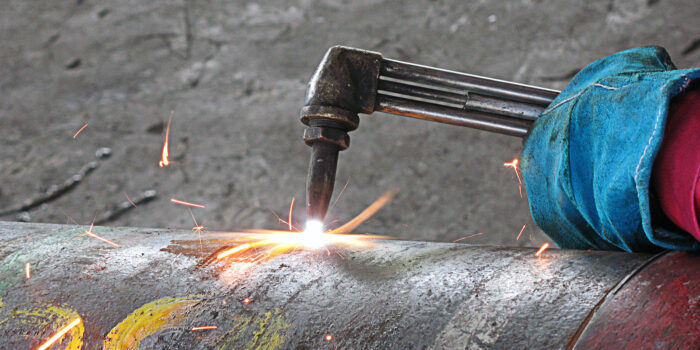Today, the tool market offers a wide selection of various welding machines and torches. Thanks to this, when preparing for work, you can choose a tool specially tailored to the needs and requirements of the material. Depending on the welding methods used for work, the appropriate type of burner should be selected. The wrong choice in this case may not only reduce the work efficiency and unnecessarily damage the material, but also pose a threat to the people performing the work. That is why it is so important to choose the right tool.
Two common types of torches used in welding work are acetylene-oxygen and plasma torches. They differ significantly from each other both in terms of function and the possible material they can process. It is useful to know the differences between these two methods so that you know where they can be used to get the most productivity out of your work.
Oxy-acetylene torch gas welding
Gas combustion involves heating the material to the ignition temperature with a welder. The molten metal oxides are then forced out through a very high-pressure gas line.

Gas welding machines work by heating technical gas and mixing it in the right proportions with air. Acetylene is often used as the fuel gas. When properly heated, it is able to melt metal, mixed with oxygen in the welding machine, it allows it to quickly reach high temperature. Therefore, it is an ideal welding method where you need to work on a sufficiently thick material and you need a very powerful torch. It is perfect for work on low-carbon and low-alloy metals.
However, the power of such a torch also limits its use. An acetylene torch is well suited where work has to be done on thick materials or those which cover a wider area. Due to the very large heat area generated by oxy-acetylene torches, they are not capable of cutting sheet metal thinner than 3 mm.
Welding with a plasma torch
Plasma torches use the so-called fourth state of matter - plasma - to operate. This is electrified matter that resembles a gas in its aggregate state. Plasma torches exploit the current-transmitting properties of plasma. It is a very good conductor of current, while the resistance in the case of plasma decreases with increasing temperature. As the temperature in the welding torch rises, the plasma begins to slowly heat up and glow until it exceeds a certain limit, resulting in an electric arc that is used to cut and weld the material.
As with the oxy-acetylene torch, here too the action is to burn metal oxides and eject them outside the material. In this case, however, this is done not with oxygen, but with an electric arc of very high kinetic force.
Welding with plasma torches is a very popular method. No wonder, it has many advantages, so you should consider using a plasma torch for work where it is possible. The plasma welder ensures high quality of the weld as well as efficient and fast work, many times faster than other types of torches. Unfortunately, due to their operation, plasma torches cannot be used everywhere. They cause a lot of noise and intense radiation, so they are not suitable for work in all conditions.


